-
 Bitcoin
Bitcoin $82,509.8850
-2.52% -
 Ethereum
Ethereum $1,800.3816
-3.46% -
 Tether USDt
Tether USDt $0.9996
-0.02% -
 XRP
XRP $2.0537
-1.80% -
 BNB
BNB $589.5226
-1.44% -
 USDC
USDC $1.0000
0.02% -
 Solana
Solana $116.3439
-6.85% -
 Dogecoin
Dogecoin $0.1595
-5.58% -
 Cardano
Cardano $0.6479
-2.79% -
 TRON
TRON $0.2366
-0.33% -
 Toncoin
Toncoin $3.5766
-9.59% -
 UNUS SED LEO
UNUS SED LEO $9.3922
-0.34% -
 Chainlink
Chainlink $12.7758
-5.57% -
 Stellar
Stellar $0.2586
-2.92% -
 Avalanche
Avalanche $18.1038
-3.99% -
 Sui
Sui $2.2274
-5.69% -
 Shiba Inu
Shiba Inu $0.0...01219
-1.98% -
 Hedera
Hedera $0.1627
-3.05% -
 Polkadot
Polkadot $4.0427
-1.01% -
 Litecoin
Litecoin $82.8658
-2.85% -
 MANTRA
MANTRA $6.3993
1.10% -
 Bitcoin Cash
Bitcoin Cash $298.9153
-0.95% -
 Bitget Token
Bitget Token $4.4795
-2.24% -
 Dai
Dai $0.9999
0.01% -
 Ethena USDe
Ethena USDe $0.9994
-0.04% -
 Hyperliquid
Hyperliquid $11.7782
-8.21% -
 Monero
Monero $212.0245
-3.58% -
 Pi
Pi $0.5720
-14.14% -
 Uniswap
Uniswap $5.8118
-4.56% -
 Aptos
Aptos $5.0504
-4.12%
What steps do blockchain transactions need to go through before they can be confirmed?
A blockchain transaction journey involves initiation, broadcasting, mempool entry, block inclusion, and confirmation, secured by miners or validators.
Mar 28, 2025 at 03:00 am

The Journey of a Blockchain Transaction: From Initiation to Confirmation
A blockchain transaction's journey to confirmation is a multi-stage process involving several crucial steps. Understanding these steps is vital for comprehending how blockchain ensures security and integrity. The process varies slightly depending on the specific blockchain network (e.g., Bitcoin, Ethereum), but the core principles remain consistent.
First, the transaction is initiated by the sender. This involves creating a transaction request, which includes details like the sender's address, recipient's address, and the amount of cryptocurrency being transferred. The sender then signs this transaction using their private key, proving their ownership and authorization. This signature is crucial for verifying the transaction's authenticity.
Next, the transaction is broadcast to the network. The sender transmits the signed transaction to multiple nodes within the blockchain network. These nodes are computers running the blockchain software and participating in the validation process. This broadcasting ensures redundancy and increases the likelihood of the transaction being processed.
After broadcasting, the transaction enters the mempool. The mempool, or memory pool, is a temporary holding area where pending transactions wait to be included in a block. The transaction's position in the mempool often depends on factors like transaction fees (higher fees generally lead to faster processing).
The crucial step of mining (or validation, in Proof-of-Stake networks) then occurs. Miners (or validators) compete to solve complex cryptographic puzzles. The first miner to solve the puzzle adds a new block containing a batch of verified transactions, including the pending transaction, to the blockchain. This process adds a layer of security, making it computationally expensive to alter past transactions.
Once the transaction is included in a block, it undergoes confirmation. The number of confirmations required varies depending on the blockchain and the desired level of security. Each subsequent block added to the chain adds another layer of confirmation. Generally, more confirmations equate to a lower risk of the transaction being reversed.
Finally, the transaction is considered confirmed. Once the transaction has received the required number of confirmations, it is generally considered irreversible and permanently recorded on the blockchain. This signifies the successful completion of the transaction and the transfer of cryptocurrency.
Understanding Transaction Fees and Confirmation Times
Transaction fees play a significant role in the speed of confirmation. Higher fees generally incentivize miners to prioritize the transaction, leading to faster inclusion in a block. Confirmation times also vary depending on the network's congestion. During periods of high network activity, confirmation times can be significantly longer.
- Transaction Creation: The sender initiates the transaction, including all necessary details and signing it with their private key.
- Broadcasting: The signed transaction is sent to multiple nodes in the network for validation.
- Mempool Entry: The transaction enters the mempool, waiting to be included in a block.
- Block Inclusion: Miners/Validators compete to add the transaction to a new block on the blockchain.
- Confirmation: The block containing the transaction is added to the blockchain, providing confirmation.
Frequently Asked Questions
Q: What happens if a transaction is not confirmed?
A: If a transaction remains unconfirmed for an extended period, it might be due to insufficient transaction fees or network congestion. The sender might need to increase the fee or wait for network conditions to improve. In some cases, the transaction might be dropped if it's deemed invalid.
Q: How many confirmations are generally considered sufficient?
A: The number of confirmations varies depending on the blockchain and the level of security required. For Bitcoin, 6 confirmations are often considered sufficient, while other blockchains might require fewer or more.
Q: What is the role of miners/validators in transaction confirmation?
A: Miners (in Proof-of-Work) or validators (in Proof-of-Stake) are responsible for verifying transactions and adding them to blocks on the blockchain. They secure the network and ensure the integrity of transactions.
Q: Can a confirmed transaction be reversed?
A: Once a transaction has received sufficient confirmations, reversing it is extremely difficult and computationally expensive, effectively making it irreversible. However, in rare cases, network vulnerabilities or consensus issues might lead to exceptions.
Q: What is the mempool and why is it important?
A: The mempool is a temporary holding area for pending transactions. It acts as a buffer, managing the flow of transactions before they are included in a block. The mempool's size and congestion can influence transaction confirmation times.
Q: How do transaction fees affect confirmation times?
A: Higher transaction fees incentivize miners/validators to prioritize the transaction, leading to faster confirmation times. This is because miners are more likely to include transactions with higher fees in their blocks.
Q: What factors can influence transaction confirmation times besides fees?
A: Network congestion, the complexity of the transaction, and the specific blockchain's processing capabilities all contribute to transaction confirmation times. High network activity can lead to longer delays.
Q: What happens if my transaction is stuck in the mempool?
A: If your transaction is stuck, it's likely due to insufficient fees or network congestion. You can try increasing the fee or waiting for the network to clear. Monitoring the transaction's status on a blockchain explorer can help determine its progress.
Q: Are all blockchain transactions equal in terms of confirmation speed?
A: No, some transactions, particularly those with higher fees and simpler structures, are processed faster than others. Complex transactions or those with low fees may experience longer confirmation times.
Q: What is the significance of the private key in the transaction process?
A: The private key is essential for signing the transaction, proving the sender's ownership and authorization. Without the correct private key, the transaction cannot be validated. Losing your private key results in the loss of access to your cryptocurrency.
Q: How can I track the status of my transaction?
A: Most blockchains have online explorers where you can enter your transaction ID (hash) to track its status and see if it has been confirmed. These explorers provide real-time information about the transaction's progress.
Disclaimer:info@kdj.com
The information provided is not trading advice. kdj.com does not assume any responsibility for any investments made based on the information provided in this article. Cryptocurrencies are highly volatile and it is highly recommended that you invest with caution after thorough research!
If you believe that the content used on this website infringes your copyright, please contact us immediately (info@kdj.com) and we will delete it promptly.
- How XRPL Utility Can Support Token Price Growth
- 2025-04-04 05:35:12
- Long-dormant Bitcoin wallets have suddenly sprung to life
- 2025-04-04 05:35:12
- ExoraPad ($EXP), an innovative AI-powered launchpad exclusively developed for the XRP Ledger (XRPL), has reached an impressive milestone
- 2025-04-04 05:30:12
- XRP Price Surge Could Enable Early Retirement for Numerous Investors
- 2025-04-04 05:30:12
- XRP Price Prediction: Will XRP Bounce From This Support Or Continue Its Descent?
- 2025-04-04 05:25:12
- As US Treasury yields hit 6-month lows, Bitcoin (BTC) price may be poised for a breakout
- 2025-04-04 05:25:12
Related knowledge
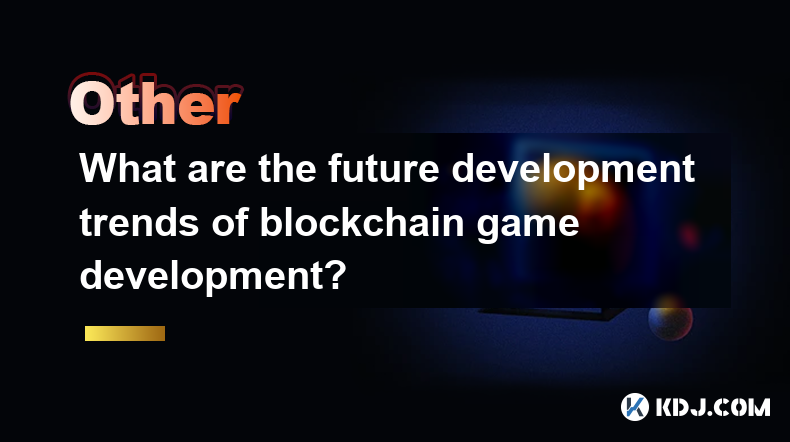
What are the future development trends of blockchain game development?
Apr 03,2025 at 05:00am
Blockchain technology has revolutionized various industries, and gaming is no exception. As we look to the future, several trends are set to shape the development of blockchain games. These trends not only promise to enhance the gaming experience but also to integrate blockchain technology more seamlessly into the gaming ecosystem. Let's explore these t...
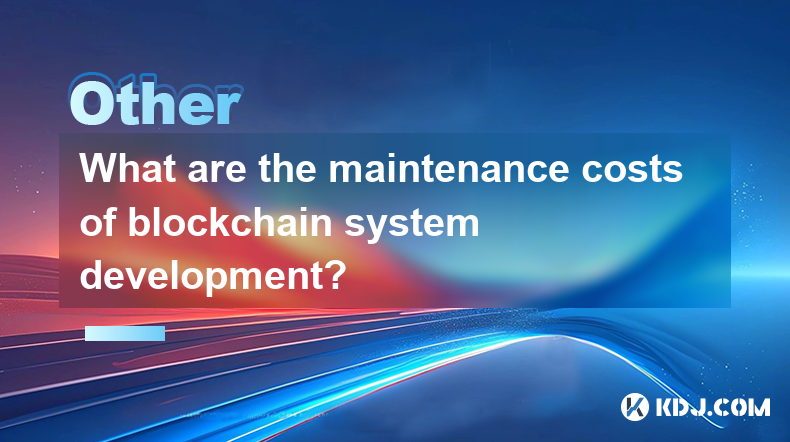
What are the maintenance costs of blockchain system development?
Apr 03,2025 at 06:07pm
The maintenance costs of blockchain system development are multifaceted and depend on various factors. These costs can include technical maintenance, security updates, infrastructure expenses, and personnel costs. Understanding these elements is crucial for anyone planning to develop or maintain a blockchain system. Technical MaintenanceTechnical mainte...
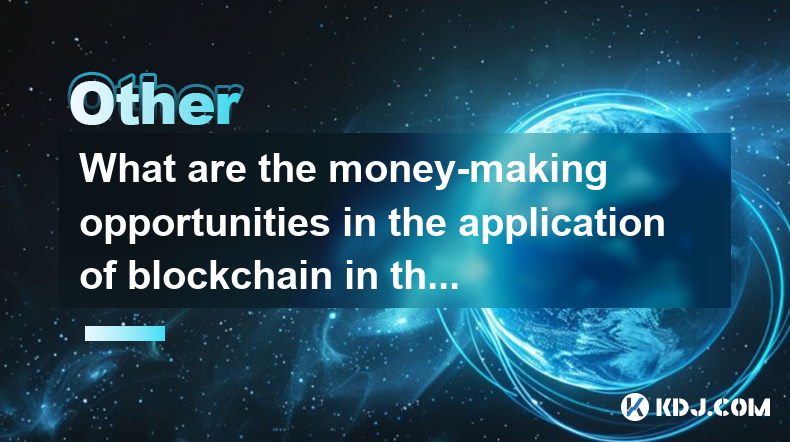
What are the money-making opportunities in the application of blockchain in the medical industry?
Apr 03,2025 at 03:35am
The integration of blockchain technology into the medical industry presents a myriad of money-making opportunities that can revolutionize healthcare systems. Blockchain's inherent characteristics, such as transparency, security, and immutability, make it an ideal solution for various medical applications. By leveraging blockchain, companies can develop ...
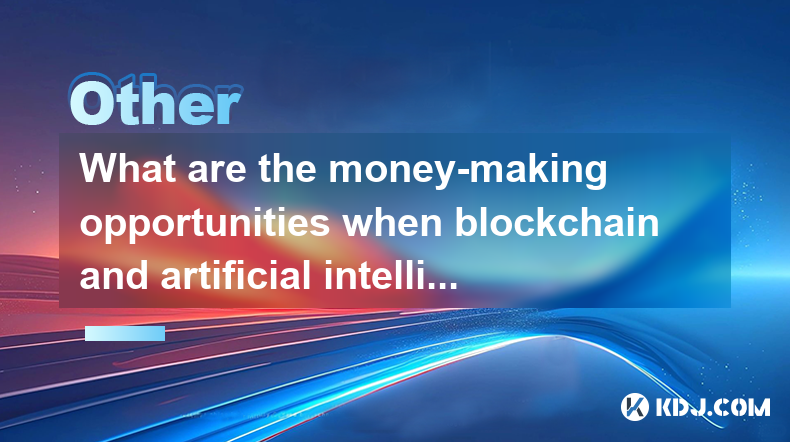
What are the money-making opportunities when blockchain and artificial intelligence are combined?
Apr 04,2025 at 01:28am
The convergence of blockchain and artificial intelligence (AI) presents a myriad of money-making opportunities within the cryptocurrency circle. This fusion leverages the decentralized and secure nature of blockchain with the analytical prowess of AI, creating innovative solutions and platforms that can generate significant revenue. From enhancing tradi...
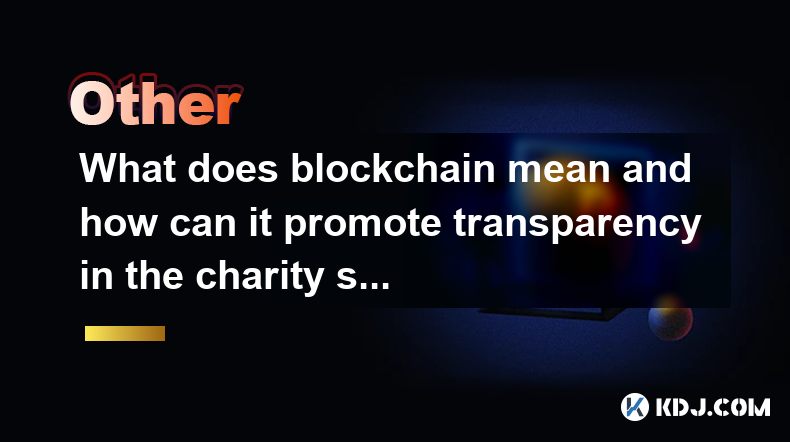
What does blockchain mean and how can it promote transparency in the charity sector?
Apr 03,2025 at 08:29pm
Blockchain technology is a decentralized, distributed ledger that records transactions across numerous computers. This ensures that the data is transparent and nearly impossible to alter retroactively. Essentially, blockchain serves as a digital ledger of all cryptocurrency transactions, enabling secure and direct exchanges without the need for intermed...
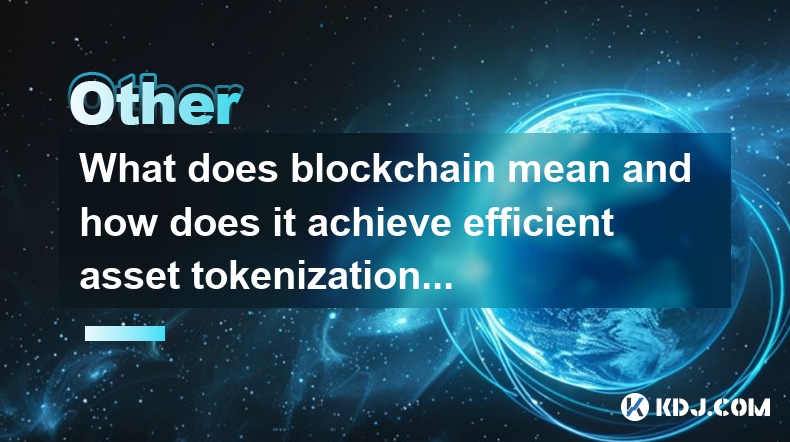
What does blockchain mean and how does it achieve efficient asset tokenization?
Apr 03,2025 at 07:57pm
Blockchain technology is a decentralized, distributed ledger that records transactions across numerous computers. It ensures that each transaction is secure, transparent, and immutable. The concept of blockchain was introduced with the launch of Bitcoin in 2009, but its applications have since expanded far beyond cryptocurrencies. At its core, blockchai...

What are the future development trends of blockchain game development?
Apr 03,2025 at 05:00am
Blockchain technology has revolutionized various industries, and gaming is no exception. As we look to the future, several trends are set to shape the development of blockchain games. These trends not only promise to enhance the gaming experience but also to integrate blockchain technology more seamlessly into the gaming ecosystem. Let's explore these t...

What are the maintenance costs of blockchain system development?
Apr 03,2025 at 06:07pm
The maintenance costs of blockchain system development are multifaceted and depend on various factors. These costs can include technical maintenance, security updates, infrastructure expenses, and personnel costs. Understanding these elements is crucial for anyone planning to develop or maintain a blockchain system. Technical MaintenanceTechnical mainte...

What are the money-making opportunities in the application of blockchain in the medical industry?
Apr 03,2025 at 03:35am
The integration of blockchain technology into the medical industry presents a myriad of money-making opportunities that can revolutionize healthcare systems. Blockchain's inherent characteristics, such as transparency, security, and immutability, make it an ideal solution for various medical applications. By leveraging blockchain, companies can develop ...

What are the money-making opportunities when blockchain and artificial intelligence are combined?
Apr 04,2025 at 01:28am
The convergence of blockchain and artificial intelligence (AI) presents a myriad of money-making opportunities within the cryptocurrency circle. This fusion leverages the decentralized and secure nature of blockchain with the analytical prowess of AI, creating innovative solutions and platforms that can generate significant revenue. From enhancing tradi...

What does blockchain mean and how can it promote transparency in the charity sector?
Apr 03,2025 at 08:29pm
Blockchain technology is a decentralized, distributed ledger that records transactions across numerous computers. This ensures that the data is transparent and nearly impossible to alter retroactively. Essentially, blockchain serves as a digital ledger of all cryptocurrency transactions, enabling secure and direct exchanges without the need for intermed...

What does blockchain mean and how does it achieve efficient asset tokenization?
Apr 03,2025 at 07:57pm
Blockchain technology is a decentralized, distributed ledger that records transactions across numerous computers. It ensures that each transaction is secure, transparent, and immutable. The concept of blockchain was introduced with the launch of Bitcoin in 2009, but its applications have since expanded far beyond cryptocurrencies. At its core, blockchai...
See all articles






















































































